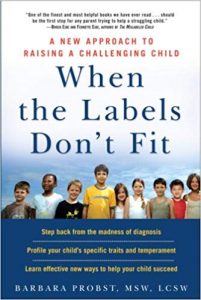Organic Coherence: Enhancing A Scene’s Effectiveness
 How many times have we heard that every scene must have a goal, conflict, and pivot, concluding with an upward or downward shift in the protagonist’s journey? The formulation sounds right and, to an extent, it is. Like most generic advice, however, it’s too rigid and mechanical; something’s left out.
How many times have we heard that every scene must have a goal, conflict, and pivot, concluding with an upward or downward shift in the protagonist’s journey? The formulation sounds right and, to an extent, it is. Like most generic advice, however, it’s too rigid and mechanical; something’s left out.
That’s because we need to go beyond the beams and girders of a scene’s “architecture” and think about its organic coherence – its experiential structure, the lived experience of the flesh-and-blood reader – which is different from its dramatic structure, though each can affect the other.
Organic coherence is the sense of satisfaction we have, as readers, when a scene “gets to us,” feels meaningful and whole. Without it, a scene may be technically perfect but flat.
Four principles, in combination, help to create this coherence. These principles offer a guide to writing effective scenes and a means of assessment.
First, the resonance between the beginning and ending.
The way the scene opens and the way it closes must be related, but that relationship needn’t be as mechanical as “protagonist is closer to story goal” or “protagonist is farther from story goal.” There are many other ways the beginning and ending can be related – and experienced as related by the reader. For example:
- By echoing: the repetition of an evocative image, object, or phrase – first appearing early in the scene – whose meaning reverberates in a new way at the end.
- By elevating: the solidification of a longing, foreboding, or hunch that was suggested at the beginning of the scene. This can be the movement from idea to action, or from lesser to greater intensity – that is, from a “quiet” desire, fear, or action to a stronger iteration of the same emotion or behavior.
- By inverting: the reversal of a belief, desire, alliance, or expectation that was dominant at the beginning of the scene. This can be partial, through the arousing of doubt, or total, through a shock such as betrayal or the appearance of new knowledge.
- By undoing: the character’s exit from a setting that provoked regret, humiliation, fear, or another emotion that threw her world off-balance.
Ask yourself: Isolate the first and last paragraphs of a scene. Is it clear that they belong together, like bookends? If the answer is no, what can I do to create the missing resonance?
Second, a moment of peak intensity.
Somewhere in the scene, typically near the end, there needs to be a sentence that captures the scene’s particular emotional quality. It’s the moment that grabs your reader, the sentence she just can’t forget. Prior sentences lead up to this peak; subsequent sentences show its effects.
Although this peak moment can reflect a new realization, it’s better to avoid words like “realized” and “understood,” since they shift the focus to the mind. In general, the reader’s experience of peak intensity is strengthened by the use of concrete details, rather than by words that name generic emotions.
Ask yourself: What is the one sentence, without which the scene would lose its emotional power? If you’re not sure, try deleting different sentences and note the effect. If you can’t find that peak sentence, add it. If there seem to be several, you may have over-written the scene; try picking just one.
Third, the use of supporting features to evoke reader participation.
Story events are given texture, nuance, and depth by passages of interiority and exteriority. Interiority means stepping inside the point-of-view character’s mind (through reflection, emotional response, or memory). Exteriority means describing the outer world, usually to create context or mood. The purpose of both techniques is to enhance the narrative events – to help the reader feel why an event matters, and to whom.
But their use can’t be random. Timing (placement in the scene) and duration (length of the passage) must be thoughtfully rendered, or they will jolt the reader out of the flow of empathetic engagement. Thus, the writer must be crystal clear about her intention.
If you’re using interiority, what is your specific purpose right now? Is it to evoke empathy, show conflict or struggle, connect with the past or future? Why is interiority the best way to accomplish this?
Ask yourself: What would happen if I externalized the moment instead – through an action, gesture, or interaction with the environment (e.g. the character fingering the frayed fabric of the couch, rather than ruminating on how her life seems to be falling apart)? How can I draw the reader into the character’s embodied experience, rather than into her mind?
If you’re using exteriority, why have you selected a specific aspect of the environment to move into the foreground right now (e.g., sound, light, temperature) or given an object a specific quality (e.g., size, color, location)? Is it to evoke a memory or show something about the culture, social dynamics, or power relations among the characters?
Ask yourself: How else, other than through description, can I convey this? Can I use dialogue or movement instead of descriptive details? How can I pull the reader inside the scene as a participant, rather than keeping her apart as an observer?
Fourth, a re-opening after the apparent resolution. Yes, every scene needs a satisfying ending, a clear indication of how the world of the protagonist is different from the way it was at the beginning. But it also needs to unsettle us again, to provoke a new question, suggest further complexity, signal that there’s more to come. A coda that says: Or maybe not.
Ask yourself: What sentence lets the reader know that the story isn’t over?
Goal, conflict, resolution – these are the bones that give a scene its shape. But an effective scene needs an emotional structure as well – not merely the evocation of strong emotional reactions, but a coherence among these responses, the felt experience that they belong together.
The principles and techniques, outlined above, can help to promote this coherence.
—
Barbara Linn Probst, author of the groundbreaking book on nurturing out-of-the-box children, When the Labels Don’t Fit, is a writer, teacher, researcher, and clinician living in New York’s Hudson Valley. http://www.barbaralinnprobst.com/
About WHEN THE LABELS DON’T FIT
 “One of the finest and most helpful books we have ever read . . . should be the first stop for any parent trying to help a struggling child.”
“One of the finest and most helpful books we have ever read . . . should be the first stop for any parent trying to help a struggling child.”
—Brock Eide and Fernette Eide, authors of The Mislabeled Child
Finally, a positive approach designed around your child’s traits and needs
Many children do things that seem odd, troubling, or excessive at some point in their development, and our culture is quick to attach a label to every child who’s “outside the box” or hard to raise. Again and again, studies document the explosion in the number of children receiving psychiatric diagnoses for being intense, moody, or offbeat.
In this groundbreaking book, childhood development expert Barbara Probst provides a new framework for identifying the specific traits—like rigidity, curiosity, perfectionism, intensity, slow tempo, a need for novelty, or a need for control—that lie at the root of your child’s challenging behavior.
When the Labels Don’t Fit features a questionnaire for profiling your child’s temperament and more than sixty strategies for dealing with specific kinds of behavior. It’s the first comprehensive system that’s not based on figuring out what’s “wrong” with your child, but on helping you tap into your child’s strengths so you can manage, nurture, and enjoy his or her essential nature.
Category: Contemporary Women Writers, How To and Tips
























Some excellent ideas here – so many blog posts deal with plot structure; I like the approach of also looking at the emotional resonance that it’s possible to add in deliberately through a careful analysis of how the scene/chapter is working.
Very good advice. I am tucking it away for my revision work.
Lots of great insights here – so many people focus on the mechanics but this guest blogger’s ideas about how to analyze the emotional aspects of a scene as well offer new insights that I haven’t heard before. Excellent!
This is a deep dive into revision at a scene level and takes a different approach than the typical “story structure” stuff. Gives me lots to think about.
Excellent. Thank you, Barbara. Great advice delivered in easily digestible chunks. The right information at the right time for me, as I dive deep into my edits.
Fabulous article! Just what I needed to learn today. Many thanks.